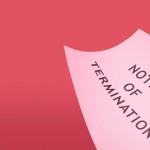Sustainability. Staying power through wise choices. I have heard people argue the causes of global warming, and the best human response, but I have yet to hear anyone attack the core value of sustainability. And it has become a metaphor in addition to an environmental goal. I have heard folks talk about sustainability in terms of how they choose to spend their time and personal energies, and it has definitely become a way of looking at organizations.
In the first blog of this pair, I promised to look at the issue of the Reduction in Force cycle (you know, the thing that happens where hundreds of teachers are pink-slipped each spring only to be rehired later in the summer?) in terms of the theory of professional capital developed by Andy Hargreaves and Michael Fullan in their book Professional Capital: Transforming Teaching in Every School.
Professional capital is basically a sustainability model for public education. In their book, Hargreaves and Fullan argue that public education policy must move away from the idea of hiring good (i.e. young) talent, working them until they are exhausted, raising standards and accountability, creating competition among schools and districts, culling out the “bad teachers” and old (i.e. lazy, bitter, and complacent) blood. They argue that good teaching is complex, dynamic and demanding, and based so much on a strong collective commitment that competition among colleagues or among schools seems counterproductive. Good teaching is not simply delivered by a talented teacher, but is created through a rich, collaborative and committed culture of continuous improvement. Even the best teacher will have limited success in a terrible school; conversely, even the worst teacher will improve in the right kind of environment.
Hargreaves and Fullan state: “Commitment is an emotional state as well as a moral value.” They also point out that an individual teacher’s commitment will be affected by the teacher’s personal life, professional life, and the school in which she works. In other words, we need not only committed teachers, but committed systems. It is a moral imperative.
Arizona does not provide a committed system for its teachers. It fires them by the hundreds each spring, and drags them back during the summer after they have expended all their energies on plan B. It pays them so poorly that tens of thousands of certified teachers don’t even choose to work as teachers in our state. It (among other states) works them so hard and provides so little support to new teachers that half the teachers leave after five years. It creates competition among districts and schools for students, who bring with them their paltry per-pupil-funding that currently ranks 50th in the nation. And now, the legislature will make good on years of underfunding K-12 in Arizona by taking money out of the very State Land Trust that was originally for the purpose of building the public education system, thereby endangering future funding for our children’s children.
This system is not sustainable. It consumes its best and most precious resources.
And yet we must applaud the lawsuit settlement as a victory, because it begins a process of addressing the decades-long attack on public education. If the public demands it.
I am interested to see what happens should all the empty special education positions begin to be filled; should instructional aides, PE teachers, and librarians return to schools; should aging and inadequate classroom furniture be fixed and replaced; should teachers feel more secure in their salaries and in the very existence of their jobs. It will be exciting to see what can happen when all the worry and grit that teachers and staff have expended over the years making up for what schools lacked can begin to be redirected toward the possibilities for our students in a well-funded and committed system, toward innovation and vision, toward individualization and professionalization.
But this shift will only happen if the public demands it. Legislators and even some parent groups have already begun to urge, yes urge, voters across the state to defeat every override election. Districts such as Dysart have relied on these overrides to simply keep schools afloat. The AEA lawsuit addresses funds that should have been in schools all along. Damage has been done over these years, damage which will not be repaired in year one of a settlement. The system needs time to heal. I hope that voters can see beyond the ideology and understand that in order to re-invest in a system that will sustain itself, both overrides AND the lawsuit settlement are necessary. That and more.
Arizona really needs to consider whether the ultimate goal in educational policy is actually good teaching. If the goal is good teaching, and if we honestly look at what that requires of both individuals and the system to be sustainable, then the path is clear. If the goal is to support a party line which becomes more extreme year by year, if the goal is ideology, then that’s a different story. But let’s be honest about what we really want.
photo credit: <a href=”http://www.flickr.com/photos/66576488@N00/7034177161″>Wadi Rum</a> via <a href=”http://photopin.com”>photopin</a> <a href=”https://creativecommons.org/licenses/by-nc/2.0/”>(license)</a>










